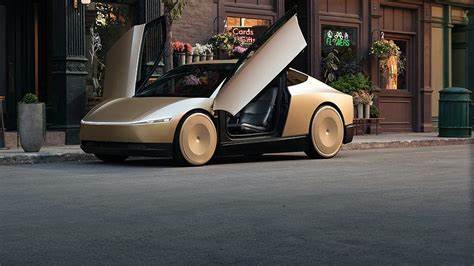Tesla’s unveiling of the Cybercab, a sporty, two-seater robotaxi, has left experts and investors scratching their heads. Presented by Elon Musk at a highly anticipated event near Los Angeles, the futuristic design contrasts sharply with the typical image of a taxi—one designed to accommodate multiple passengers and luggage. Slated for production in 2026 and priced under $30,000, the Cybercab raised questions about its practicality for families or airport trips, but Musk did not address these concerns, leaving analysts puzzled.
Jonathan Elfalan, vehicle testing director at Edmunds.com, expressed his confusion: “When you think of a cab, you think of something that can carry more than two people. Making this a two-seat-only car is very perplexing.” Despite the excitement around the design, the lack of financial clarity and details on production timelines caused Tesla stocks to drop by 9% the next day.
Experts noted that robotaxis should ideally mimic traditional taxis with spacious interiors, sliding doors, and ample seating. While Musk did present a futuristic robovan capable of seating up to 20 people, no timeline for its release was provided. Sandeep Rao, senior researcher at Leverage Shares, pointed out that two-door vehicles represent only 2% of the US car market (excluding SUVs and pickups), suggesting limited demand for the Cybercab.
Musk’s vision for the Cybercab is to make it cheaper than mass transit, predicting an operating cost of 20 cents per mile. However, he did not provide details on production scale, regulatory approvals, or how Tesla plans to outpace competitors like Waymo, which already operates a fleet of robotaxis. Waymo’s former CEO, John Krafcik, described Tesla’s design as “more playful than serious,” citing challenges for older passengers and people with disabilities due to the two-door configuration.
Tesla’s success in the robotaxi market will be critical for its long-term growth, especially as Musk aims to push the company’s valuation to $5 trillion, up from the current $700 billion. Some experts, like Sam Fiorani of AutoForecast Solutions, believe Tesla will eventually need to produce larger robotaxis to meet broader market needs. Blake Anderson, senior investment analyst at Carson Group, suggested that the two-seat Cybercab may have been rushed to market as a lower-cost, mass-market model, but acknowledged that the design choice doesn’t quite add up for a company aiming to broaden its appeal.

